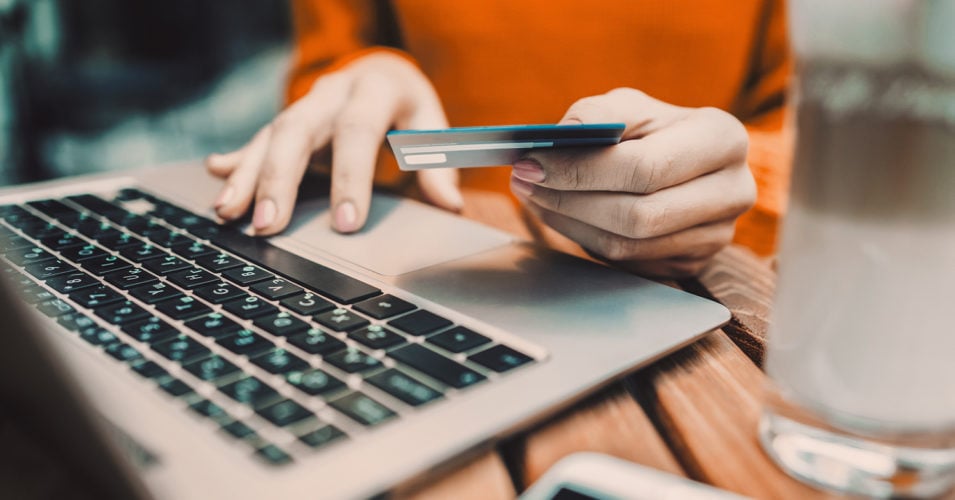The purchase funnel is a consumer-focused marketing model that illustrates the journey your buyers take. Most leads are not instant customers; they travel down the funnel researching, comparing, and evaluating before deciding your product or service is the one they want to use.
Understanding the steps prospective buyers go through will help you market correctly to convert as many of them into customers as possible. At Zero Gravity Marketing (ZGM), we understand that having a powerful marketing funnel and getting it right is critical in running your business efficiently and successfully. Here is a brief overview of the purchase funnel and how it varies for B2B and B2C companies.
The Purchase Funnel Explained
The purchase funnel is a simple way to visualize the complex process of garnering leads and converting them into paying customers. Breaking it down into this format helps people understand what it is and how to implement it into their business plan. After all, acquiring and converting new leads is key for a full-funnel marketing campaign. Here are the sales funnel steps and everything you need to know about each stage:
Awareness
This step is referring to efforts that focus on building awareness for a new product or service. Before anyone can become a customer, they have to know you exist, so the funnel begins with people becoming aware of your company. In this stage, you have to build trust and establish thought leadership. This is usually accomplished through top of funnel marketing strategies; however, sometimes, consumers will find you through their research (and your search engine optimization (SEO) efforts, of course)!
You can also implement whitepapers, advertisements, email marketing, social media marketing, and more to engage prospective customers. With these strategies, lead generation occurs as information is collected and leads are pulled further down the funnel. To increase your top of funnel campaigns, you should incorporate audience segmentation, proper testing, and educational content, too.
Awareness stage content examples:
- Blog topic: Everything You Need to Know About Gas BBQs.
- Email subject line: Have You Seen The Sneakers Everyone Is Wearing?
- Ad copy: Still Dealing With That Old Vacuum? Make Room For Our All-New Version.
Interest
After leads have been gathered, they begin to research and grow their interest in what you have to offer. In this stage of the sales funnel, brands should be developing relationships and building trust. For this, you can retarget your visitors on social media platforms with more information on the pages they were exploring in the awareness stage. By working with SEO experts, they can utilize tools such as Google Tag Manager to tag and track visitors’ activity based on their previous searches.
Interest stage content examples:
- Blog topic: 10 Reasons You’ll Never Go Back To Your Old Vacuum After Using Ours.
- Email subject line: Aren’t Sold Yet? Take A Look At Our Sneakers In Action.
- Social post: We’re so happy you’re here to join our exclusive crew of grill masters!
Consideration
At this point, leads are very interested in your brand, but they still haven’t entirely made up their mind. Automated email campaigns, free trials, and targeted content are great marketing tools to use during this stage. It can take weeks to months for prospective buyers to evaluate a business’s authority and whether their product or service can solve their problem. Here, you will want to work closely with leads and prove that they should choose your company. Use case studies and webinars to attract new people and have experts follow key metrics such as open email rates and cost per lead (CPL).
Consideration stage examples:
- Blog topic: Five Ways Our BBQ Grills Beat the Competition.
- Webinar: How Our Sneaker Brand Is Changing the Retail Industry.
- Case study: A Closer Look At Why These Businesses Only Use Our Vacuum.
Intent
By the intent stage, prospects will demonstrate that they intend on buying your product or service. This can be by answering a survey, demoing a product, or even placing an item into their shopping cart. Now, it is your job to make sure they don’t get away. The intent stage is a fantastic opportunity to express why your company is the best and why they shouldn’t take their business elsewhere.
Intent stage examples:
- Email subject line: You Left These Sneakers Behind! Don’t Forget To Tie Up Loose Ends.
- Social post: Don’t just take our word for it — take a look at what our customers have to say about our vacuums.
- Customer service automation: Hi there! Have any questions about our BBQs? We’re always here, ready to help.
Evaluation
At the purchase funnel’s evaluation stage, customers are just about ready to commit, but they want to make one last comparison between you and your competition. This is when nurturing your customer is vital. Although prospective buyer patterns vary, you or the digital marketing team you’re working with may have been able to pull data and find personal criteria on selective searches.
Once you are aware of your leads’ general patterns or attributes, you will want to guide your marketing in that direction. For example, if you found prospective buyers are interested in durability, run ads and content that highlight those features.
Evaluation stage examples:
- Social post: Interested in lightweight vacuum models? You’re in the right place.
- Ad copy: Is comfort your thing? We thought you’d like this pair, too.
- Email subject line: We saw you looking at 3 Burner grills… Check these models out.
Purchase
After making their way through the entire sales funnel, your lead has finally converted into a customer. Congratulations! If the experience is a positive one, you will now get referrals, beginning at the top of the purchase funnel. You can then introduce the bottom of funnel content to help your customers feel confident in their decision to buy your product or service. Use case studies showcasing previous or current consumers’ success and all kinds of businesses or individuals to display the different people who use your company.
Purchase stage examples:
- Email subject line: You made a step in the right direction! Now, what’s next?
- Blog topic: How to Get the Most Out of Your New Vacuum
- Case study: Why Our Customers Won’t Ever Go Back To Another BBQ Brand
Differences Between the Purchase Funnel for B2B and B2C Brands
While the funnel stages stay the same, the big difference between B2B brands and B2C brands is how many people are involved in each step of the process. In B2C sales funnels, the purchaser is often the sole decision-maker. They will sometimes talk to family or friends, but they are making all the choices in general. You have one person to market to.
On the contrary, with B2B brands, there is usually an entire team that you have to sell during every stage of the sales funnel. But the good news is, many B2B brands end with a contractual commitment instead of a one-time purchase.
If you want to learn how to make the most out of each stage of the purchase funnel or learn about other aspects of digital marketing, contact Zero Gravity Marketing today. Our team of experts is well versed in each step and can help you convert your leads into paying customers!











